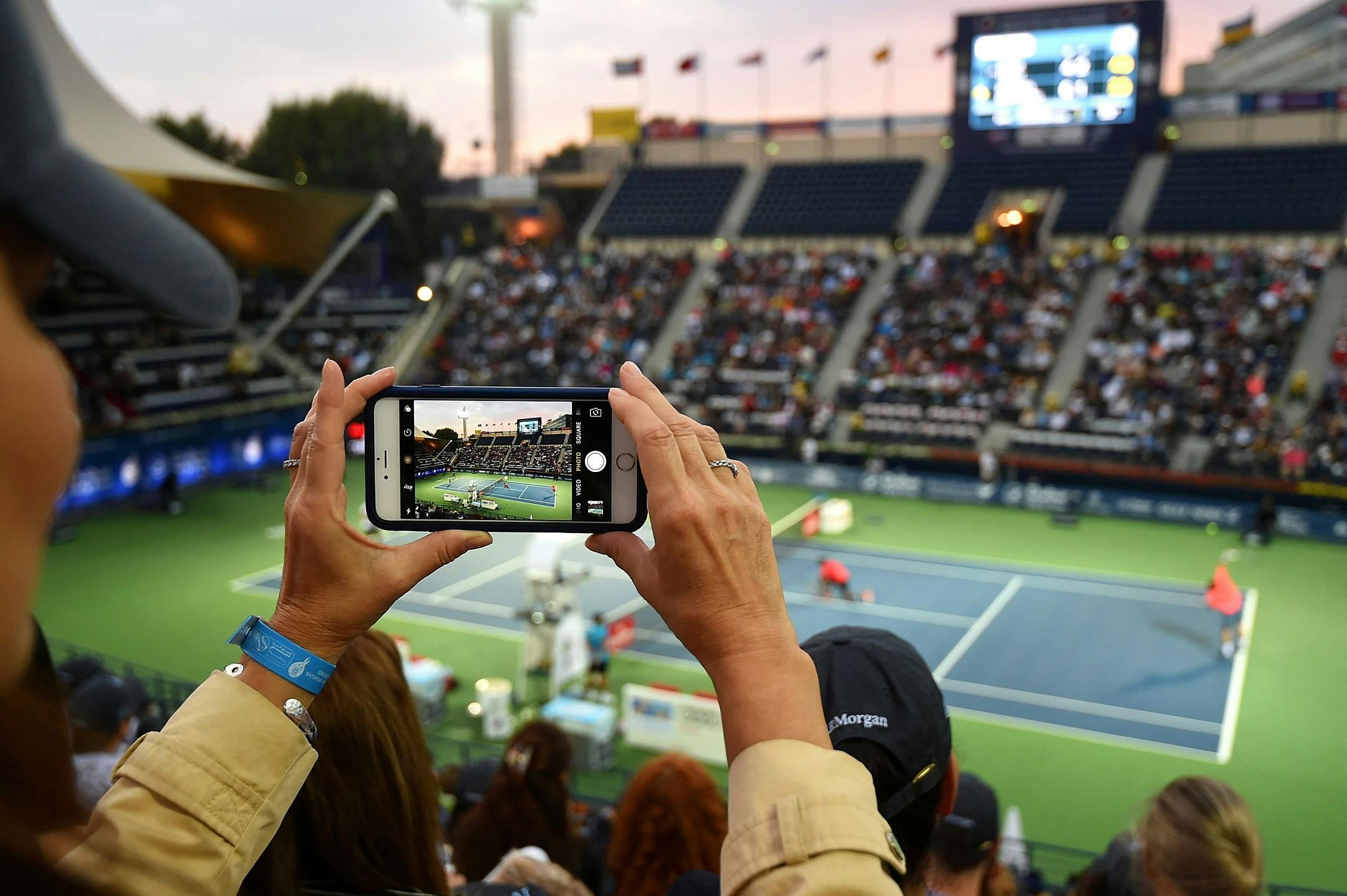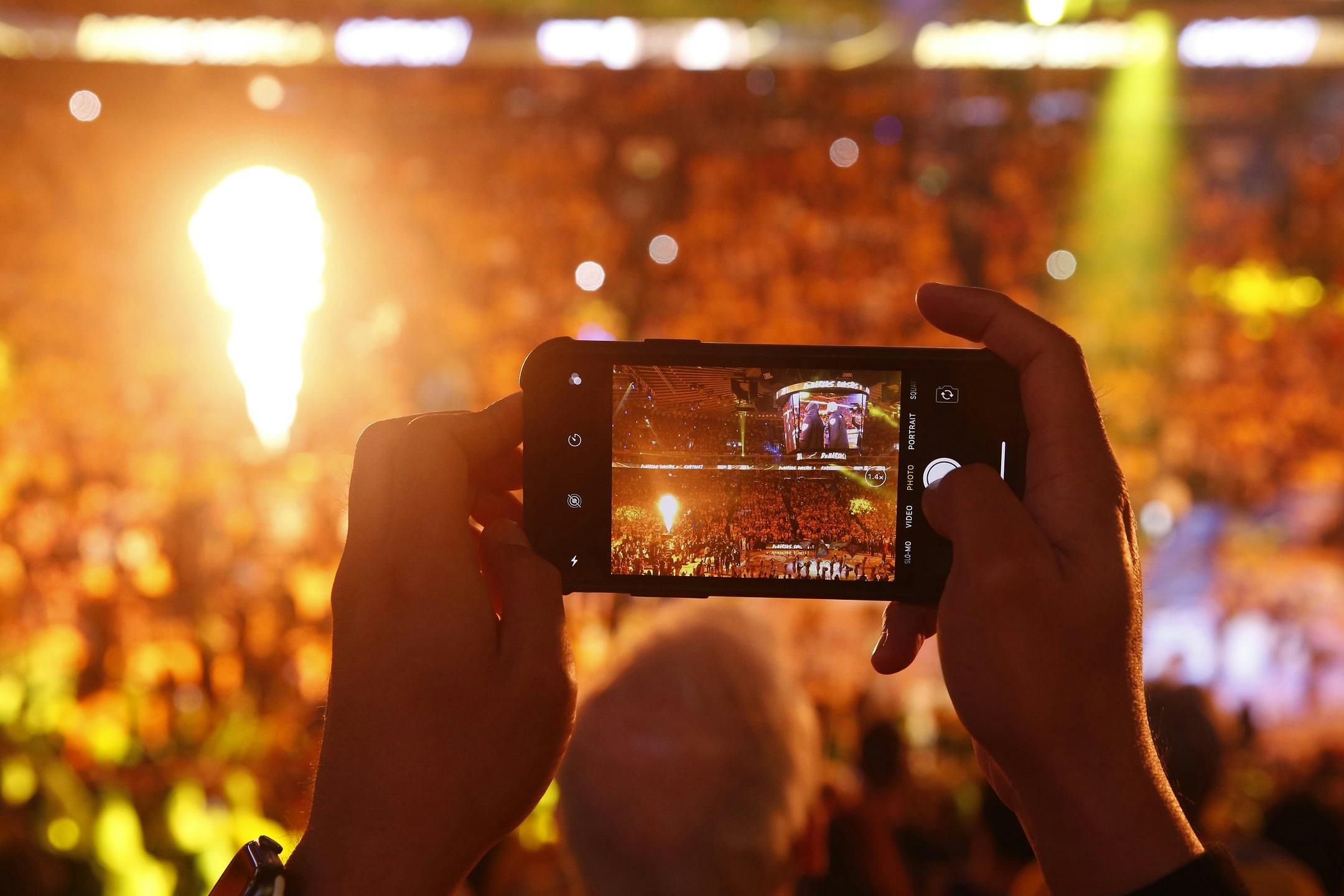Like every other significant business sector, sport is being driven and shaped by technology.
Historically it had been a largely linear business, effectively controlled by major media organisations with the deep pockets required to buy-up rights to must-see properties. They made money either because they had a mass audience attractive to advertisers or a subscriber base willing to pay to watch sport.
The inevitable result was that the media companies became the gatekeepers to opportunity in sports. Because they decided what content was available to the public, they effectively limited the ability of sports property owners and governing bodies to maximise revenues and grow their sport through re-investing.
Now that’s changing and changing fast.
While the old models may not be broken, they are certainly under pressure and the business of sport is being transformed by tech to create a new era of commercial opportunity.
Leading the change are the OTT platforms whose technology allows them to by-pass traditional media outlets to stream sports content direct to fans, offering a far wider range of sports content at more flexible price points. And because, unlike traditional broadcasters, they have a genuine two-way relationship with viewers, they accumulate commercially and strategically valuable data about fans.
Of course the tech giants like Facebook and Amazon are already dipping their toes into the waters of sports and, in the first instance, are playing at the upper end of the market, bidding for rights to properties including the Premier League and NFL and fuelling competition in those rarefied markets.
But perhaps the most exciting disruption is occurring elsewhere where creative OTT players are creating exposure and opportunity for properties considered further down sport’s traditional food chain. The result is a massive increase in the volume of content – often considered niche – available and the ability for rights owners to access, identify and monetise fans who were previously disenfranchised. The impact is truly liberating.
The key to all this is the ability for rights owners to create, manage and control their own video content and technological developments over recent years have sparked a continuing revolution in this area. Smartphones, digital connectivity and artificial intelligence are combining to make what was previously a dream a reality. Costs of production, management and distribution of video content are tumbling, providing a platform and a commercial lifeline to properties which were previously virtually invisible beyond the live audience.
The result is that smaller leagues and competitions have been able to develop monetisable media strategies which would have been unimaginable just a few years ago giving them the opportunity to build for the future with greater confidence.
The potent combination of access to previously unreachable audiences through streaming and the ability to gather and process data help make this an exciting time in the evolution of the sports business. The revolution is well and truly under way and there is no sign of it ending any time soon.
By drawing on the expertise of technology and streaming specialists Genius Sports, this special supplement looks at the opportunities and challenges for sports launching their first OTT solutions. Genius Sports provides leagues and federations at every level with automated streaming, production and OTT solutions and is uniquely positioned to present the previous barriers to entry, the rapid technological shifts and they key questions leagues must ask in a democratised video landscape.

TV barrier to entry
Streaming live sports is not a new phenomenon. As far back as September 1995 with the Seattle Mariners against the New York Yankees., sports have been using the internet to go over the top of traditional broadcasts.
And yet sports streaming and OTT still resembles an immature sector. Rapid advancements have been made in the last five years, with many experts prematurely predicting the end of TV’s dominance of live sport consumption. But even for the largest leagues and federations, creating, growing and marketing a successful OTT product is a largely untested area and the long-term potential has yet to be unearthed.
For those rights-holders beyond the top tier meanwhile, streaming represents an almighty step into the unknown. Historically, most have had to reluctantly accept TV’s ironclad grip over sport, determining which competitions are showcased to the world and which aren’t.
For those sports within the inner circle, TV’s impact has been transformational, providing increased sponsorship, exposure and investment. While for the broadcasters themselves, the largest sports have been the jewel in their crown for decades, attracting the largest audiences and billions of dollars in advertising spend.
The chasm to the top tier of sports has grown wider. The vast rights, production and distribution costs involved for the broadcasters determines that only the largest sports globally with commercially lucrative audiences have been able to benefit from an increasingly imbalanced model.
This has forced many sports to rely on social media, digital marketing and other channels to grow and engage their audience. All are valuable tools but video, whether by highlights, live streams or broadcast, is simply the most powerful means of attracting any fans’ attention.
Costs of going it alone
Every league, federation and club wants to be able to provide its fans with high-quality video content. But to truly go over the top of television and directly engage their fans, sports must cover the costs of hardware, specialist personnel and most significantly, production.
More than 5,800 credentialed media professionals were required to cover Super Bowl LIII in Atlanta and while this clearly isn’t comparable for smaller sports, it demonstrates the scale and quality of TV production that the majority of fans now expect.
Even fans of less established sports competitions will expect a reliable, high-quality stream with integrated live scores and even some more advanced team and player statistics, providing essential context to the live action. And this content has to be delivered to them on-the-go, across multiple devices in an engaging format that can be quickly consumed.
Having a video strategy is essential for every modern sports league, federation or club. In an increasingly competitive entertainment landscape, sports at all levels need to produce large volumes of content that will compete for eyeballs across inboxes, digital advertising space and in particular, social media. Where once, different social tools specialised in different forms of content (e.g. Twitter for text, Instagram for pictures) they are all increasingly dominated by video, both live and on-demand to attract millennials.
All sports have to recognise and adapt to this trend but many have been priced out of launching their first OTT platform, unable to cover the implementation, maintenance and production costs of first-to-market streaming solutions. OTT though is, by nature, a prime example of digital disruption and several market changes have democratised the streaming landscape in recent years, opening the door for sports, of all sizes, to showcase their video content to the world.
Expert insight: Anton Brams, Strategic Director, Streaming & OTT, Genius Sports

1. Why historically have sports been so reliant on TV partnerships to showcase their sport to the world?
Video, whether through live broadcast or highlights, is how fans want to consume sport if they’re not at the actual game. High-quality video content provides every league or federation with greater visibility, sponsorship potential and numerous other revenue opportunities.
For many sports, TV’s investment has been hugely advantageous with Sky Sports and the Premier League a prime example of a mutually beneficial partnership that has increased both product’s value, reach and visibility.
But TV’s dominance has also created an imbalanced model where only those sports with a commercially lucrative audience are given the platform, and those who don’t have a global following are prevented from building one.
2. How important is it for sports to integrate data and statistics into their OTT platform?
An OTT platform without any team or player statistics is effectively just a website with a video player. The quality of TV production all over the world means that fans have very high expectations for live sports. Split-second scores and performance data provide essential context to any live stream or broadcast, giving fans clear explanations of what is going on in front of them.
Across basketball and volleyball, our statistics collection tools are used by over 250 leagues and federations in over 150 countries worldwide. Every one of these partners has a unique opportunity to synchronise and unlock the value of their live video and data to automatically clip highlights, accompany every play-by-play update or social post with a video replay or create a new analysis platform for their coaches.
3. Which rights-holders are leading the way in an increasingly democratised OTT landscape?
The Ligue Nationale de Volley is setting a precedent for rights-holders at all levels. Having lost their TV contract at the end of the 2017/18 season, they prioritised the creation of a premium OTT platform (LNV TV), installing between one and three cameras in 40 venues across more than 500 matches per season.
In the first month of launching LNV TV, the GeniusLive powered OTT solution had more than 800,000 page views. Others like the World Surf League, who have a non-exclusive rights deal with Facebook Live have put OTT at the heart of an enhanced digital strategy, attracting millions of views and new social media followers.
4. What are the advantages of leagues launching their first OTT platform to commercialise their content for betting?
Engagement with betting provides another untapped revenue opportunity for sports entering the OTT space. Historically, those leagues that lack a global audience have been reluctant to engage with the betting industry, fearing that doing so will put their competitions at greater risk of match-fixing or corruption.
However, sports of all sizes are harnessing their official betting data to drive revenues and increase their potential audience, recognising that the transparency and cooperation provided by proactive engagement actually helps to safeguard their competitions.
The same principle is true for streaming. Bookmakers are always on the lookout for both live video streams that helps them to attract and retain customers and new markets that stand them out from the competition. Sports can capitalise on bookmakers’ demand for 24/7 content, creating new commercialisation revenues and showcasing their games in front of highly engaged, paying sports fans right around the world.

Rise of automated production
The most important development in enabling all levels of sport to stream their content has been the emergence of automated production systems. Being able to automatically track the live action, identify highlights, embed statistics and insert adverts and sponsorship opportunities was far beyond even the most advanced streaming solutions five years ago.
But both in and out of sport, the intervening period has seen huge progress in the field of artificial intelligence and computer vision. Whether by embedded chips in players’ shoes and the ball or advanced motion sensors to track the flow of play, democratised tracking technology has changed the game in sports streaming.
Sports of all sizes now have tools at their disposal that can automatically track, pan and zoom with every play while cutting between multiple cameras positioned around the pitch or court. These solutions weren’t immediately perfect: differentiating between major crowd movements, stitching a high-quality picture together with multiple angles and ensuring reliable, low latency streams have all been significant challenges in the emergence of automated solutions.
But by removing the need for in-venue directors, cameraman and other production staff, automated production removes what was once an insurmountable barrier to entry. Powered by cloud-based technology which simplifies how sports manage and distribute their content while processing billions of data points, these solutions are transforming the production of live sports.
As Mehul Padaia, VP of Global Marketing at Tata Communications told Raconteur last year: “The cloud is levelling the playing field between sports giants like F1 and smaller local series like the F4 British Championship. You only need a few cameras to capture the action; the rest of the production can be done easily and inexpensively in the cloud.”
“This opens up a global market for local sports leagues … Also, because producing and distributing content in the cloud is simpler and less expensive, it lowers the barriers for smaller sports organisations”.
Longtail sports launching their first OTT platform shouldn’t immediately expect a TV-level of production. But automated solutions have opened an unprecedented window of opportunity, enabling them to showcase their games for the first time while controlling when their games are played, how their video content is delivered across multiple platforms and the tools they want to use to enhance every stream and highlight.
Streaming: Smartphones’ next frontier
On top of the onerous production and resource costs, to go over the top sports would historically have to cover the significant hardware expenditure of cameras in multiple different venues.
Smartphones, however, have had a transformative effect on modern sport, making every league, federation, club and fan a content producer. Fans rely on their mobile phone to capture live streams and photos at a game and quickly consume everything from odds to scores, highlights, statistics, news and interviews when they are on-the-go.
Streaming is the next frontier for smartphones’ increasing impact on modern sport. Across post-match interviews by journalists, clubs filming behind-the-scenes content and performance analysis, video from smartphones is already relied upon by coaches, fans and media outlets every day.
Through their increased camera quality, computing power and instant distribution capabilities via the cloud, smartphones are providing all sports with an affordable and accessible streaming solution that replaces expensive hardware. Rights-holders entering the OTT market can be sceptical of the quality and reliability of smartphone-powered solutions to deliver low-latency streams that capture the excitement of live sport.
But the same reservations were expressed about smartphones ability to replace digital cameras which sold 121.5 million units globally in 2010. That number was just 19.4 million units in 2018, driven down by smartphones with constantly improving CPU, picture and video quality to make cameras increasingly obsolete.
Establishing a robust Wifi connection to support HD streaming can often be a challenge for less technologically advanced sports. However, the majority of the more than 1.3 billion smartphones sold globally in 2018 can capture 4k streams through 4G, meaning all sports are now equipped with a high-quality solution to live stream to anyone, anywhere and at any time.
Across football, basketball, volleyball, table tennis and multiple other sports, leagues and federations at all levels are already powering their OTT platforms with smarthphones. And in a move likely to spread across all levels of sport in the years to come, this summer saw the National Basketball Association (NBA) join this trend by streaming its annual Summer League using 5G.
The smartphone revolution won’t be televised but it is certainly here to stay.